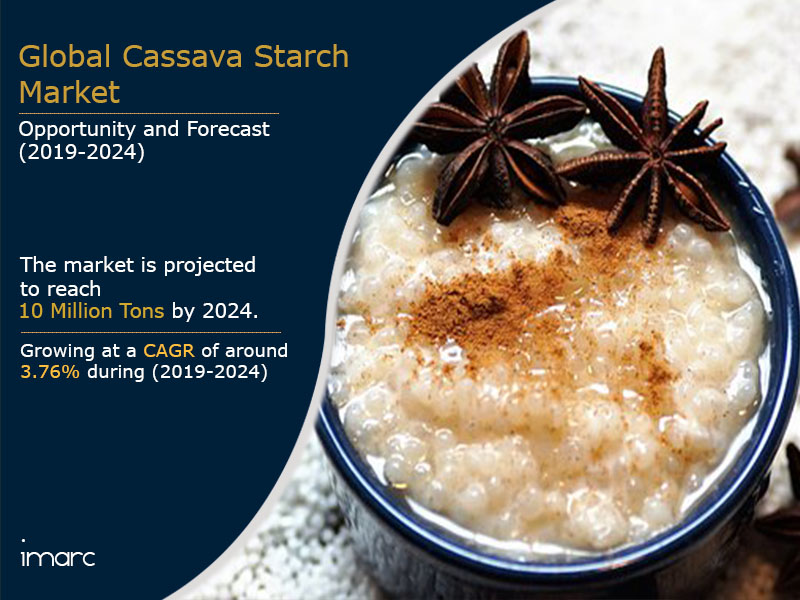Table of Contents
Starch, also known as amylum, is a tasteless and odorless white powder. While starch is the most common carbohydrate found in the human diet, it is also used at an industrial scale to synthesize beer, whiskey, and biofuels. Starch is an important part of the paper-making process as well.
The global starch market is currently growing at a CAGR of 4.4 percent and is expected to be worth $11.1 billion by the year 2020.
Global Starch Market Overview
The Supply-Demand Dynamics

- At the helm of 2019, the starch industry produced approximately 85 MMT of starch. In terms of market consumption, the sweetener industry accounted for consuming 53 percent of the total production, while 36 percent starch was utilized in native starch applications, and the modified starch industry used up the remaining 11 percent.
- Depending on the intended end-use, industries today use a variety of starch products, such as pregelatinized starch, Dextrins, low viscosity starch, cross-linked starch, oxidized starch, etherified starch, esterified starch, hydrolyzed starch, and combination starches. Hydrolyzed starch is widely used in instant-energy drinks.
- The largest starch suppliers in the current industry landscape are Meihua Holdings Group Co, Cargill Inc, Showa Sangyo Co Limited, Wilmar International Limited, Shandong Long-Live Biotech, AGRANA, and Pepees.
- The top ten starch suppliers control a whopping 65 percent share in the starch industry. This near oligarchy can be attributed to the fact that the supply capacity of starch manufacturers in emerging markets is not nearly enough to take care of the domestic demand. Further, smaller suppliers will require time to scale-up to meet this capacity. On the other hand, well-established corporations from saturated domestic markets, have the right resources and well-established channels to scale up and satiate the emerging demand.
- The biggest starch suppliers are situated in the U.S., China, Germany, Asia, and some regions of the EU. The U.S. produces approximately 30 percent of the global starch. Closely following, China manufactures around 28 percent of the global starch supply.
- The highest demand, approximately 50 percent of the net demand for starch, comes from the sweetener industry and other industries using sweeteners widely, generally in the food and beverage sector. The biggest markets for sweetener starch are North America (largest by both volume and value), the U.S., China, parts of Asia, and some regions of the EU. India and Indonesia are the largest starch importers, importing mainly from the North American and European suppliers.
Trends in the Starch Industry

- The sweetener industry will continue leading the demand for starch as the demand grows across the globe. Cornstarch will continue to be the most widely produced starch variant.
- In the coming years, the Asian starch demand will grow at a rate higher than the rest of the world due to its emerging economies and the birth of a greater number of potential markets for consumer products.
- Most of the countries in Asia have an emerging or developing economy. Consequently, the purchasing power of end-product consumers is rising, and there is an ever-increasing demand for textile, food, and paper industry sectors in the Asian economies; all of which use starch extensively. This phenomenon would drive up the demand for starch significantly in the Asian market.
- Further, the global demand for High Fructose Corn Syrup (HFCS) will also prove to be a strong driving force in the future demand for starch.
Business Opportunities

- The regions with the highest demand-supply gap for starch are China, India, Indonesia, and Germany. The colossal demand-supply gap, recently relaxed regulations and laws, and increased interest in investment in starch products in these regions makes them perfect for a new entrant to set up their facility.
- While the supply in the North American region and EU is more than domestic demand, the global demand balances out this oversupply. Further, the manufacturing facilities in the Asian region are slated to start operations 2021 onwards. By then, the current demand will still supersede supply capabilities. North American ventures are hence positioned to profit tremendously due to their unique ability to scale-up and service the growing market. Therefore, investing in a North American manufacturer is an investor’s best bet as of now.
- As an industry standard, the usual contract period between a starch supplier and the procurer may range between three months to six months. Long-term starch procurement contracts are not standard even though some long-term contracts may exist. Such short-term contracts enable procurers to look for competitive prices and ensure that none of the current players can bind down the market for long.
In Conclusion
The global starch market is set to grow at an impressive pace. Since the highest demand is from economies that are still growing, it is safe to assume that the growth is well-sustainable. Now is an investor’s best chance to invest in the sector as more players are entering the starch market, and the existing players are amping up their capabilities.




